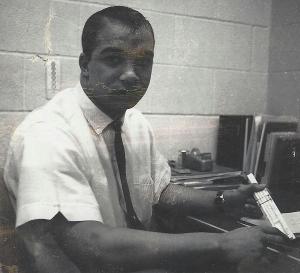Black History Month 2019
Pioneering perspective: Fenwick’s first black graduate reflects on the segregated life of his youth. “Mine is a difficult story to tell,” he says, offering a history lesson in the process.
Interview by Mark Vruno
Introduction
 School records dating back 64 years confirm that alumnus Richard Cochrane ’59 blazed a trail as Fenwick’s very first African-American student and graduate. Originally from Maywood, IL, Mr. Cochrane now lives in the sunny Southwest. In high school, he was active in student government (class treasurer and secretary) and played football and basketball (captain).
School records dating back 64 years confirm that alumnus Richard Cochrane ’59 blazed a trail as Fenwick’s very first African-American student and graduate. Originally from Maywood, IL, Mr. Cochrane now lives in the sunny Southwest. In high school, he was active in student government (class treasurer and secretary) and played football and basketball (captain).
Last February, one-time Fenwick student turned educator Marlon Hall, PhD. shared his freshman-year experience of the early 1970s, when he endured verbal abuse and physical bullying – all racially inspired. In one of several replies to Dr. Hall’s guest blog, Cochrane pointed out that his memories of Fenwick were quite different and much more positive 17 years earlier:
“Dr. Hall, I appreciate your sharing your Fenwick experiences and the strength they gave you. In context, in 1950 the world-renowned chemist Percy Julian became the first African-American to take up residence in Oak Park. His home was fire-bombed on Thanksgiving Day of that year and again in 1951. In May of 1954 the Supreme Court rendered the ‘Brown vs. Board of Education’ ruling. In September of 1955 I walked into Fenwick as a freshman, two years before the ‘Little Rock Nine,’ and I am black. There were no other black students and there would only be one more in the next four years.
“Many of my experiences were similar to yours but the negatives were overwhelmed by the support of the majority of the student body, and the faculty support cannot go without mention. There were whispers and some name-calling and even a fight or two, but the Dominican family pushed, nudged and refused to let me think of anything but finishing. I was also aware of the financial burden that I was placing on my family. In return, I received an excellent education both academically and socially….”
Cochrane’s heartfelt response prompted our Alumni Relations Team to reach out. We learned that Rich is “happily retired” and soaking up sunshine in New Mexico. Our questions and his answers:
Richard, where did you attend college? Please tell us about your professional background and STEM-related career.
RC: After graduating Fenwick in 1959, I attended St. Joseph’s College in Rensselaer, Indiana, where I majored in chemistry. While there I played freshman basketball and varsity football for two years until my knee gave out. I got a job in the coatings and ink industry and, eventually, spent 35 years with Sun Chemical Corporation. I held positions in lab synthesis, tech service, lab management, operation management and national accounts. I retired from Sun in 2003.
What was it like being the only black student at the Fenwick?

RC: In 1955, I believe my freshman class enrolled about 354 students and the school enrollment was about 1,236. As I’ve said, I found the faculty very supportive and the student body mostly treating me like any other student, with a smaller group either curious or distant. Only one of the other three students from my parish in Maywood [St. James, which closed in 2006] was close to me at Fenwick.
On the first day of school, when I went to the office to pick up my class schedule, the staff called back one of the students I was with to ask if I was really going to attend school there. A notable few of the upper-classmen were kind enough to offer short words of encouragement. If I missed the Madison St. bus, I would walk west until the next bus came and would often find the Oak Park Police close behind to make sure I reached Harlem Ave. The single greatest factor was the Dominican community. I got the feeling that they would not let me fail (or even consider quitting).
Did you have a sense that you were making “history” at Fenwick?

RC: I had no sense of making history but there was a constant feeling of not being totally “at home.” Remember, at that time Oak Park had a population of 62,000 [there are 10,000 fewer residents today] and had only one black family — and their home had twice been bombed.







